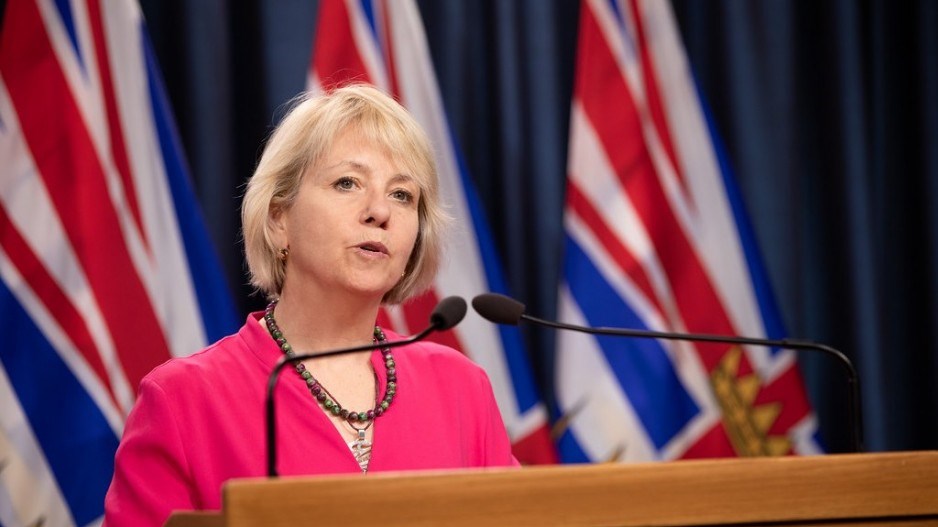Courtenay’s Lawrence Stearn says the resumption of visits to seniors homes that have been restricted because of the pandemic since mid-March is good news, but he can’t make up the time he’s lost with his wife.
On Tuesday, health officials announced scheduled visits will begin this month at long-term care and assisted-living homes that don’t have COVID-19 outbreaks. “There have been many dark and anxious days,” said Dr. Bonnie Henry, provincial health officer, who made the announcement. “But today is a brighter day for us all.”
Residents will be allowed a single designated visitor, who must book in advance. The visitor must bring and wear a mask and will be trained in safety protocols. They will be screened for COVID-19 symptoms.
Stearn’s wife, Julia Hogan, 76, who has dementia and suffered a stroke in 2016, is in Comox Valley Seniors Village.
Over the past two years, Stearn, who himself is disabled by a spinal-cord injury, visited his wife up to 10 hours a day, to hold her hand, feed her meals and change her when she fussed about having anyone else do it.
Stearn, 72, praises staff at Comox Valley but says his wife “deteriorated greatly” since the visits were stopped March 21 and the separation was “agony.”
The couple met 25 years ago in a hiking group in Maple Ridge. They are “very close” and “finish each other’s sentences,” Stearn said.
He wants to be bedside with his wife as he was before, and isn’t content with the 30-minute visits that he gets in a designated room beside the facility’s hair salon.
Stearn said during his brief visit on Tuesday several staff members were not wearing masks. He argues the workers are more likely to be exposed to the virus than he is because he’s isolated at home almost every day. He wants to enter the seniors home under the same guidelines as the staff.
Henry acknowledged restrictions on visits have been difficult on seniors and their families. “We are going to start slowly, and, as we expect things will progress well, we will expand these activities. We will be monitoring this on an ongoing basis to ensure that we can expand access as soon as it is safe to do so.” That could be as early as August.
The visits will be reviewed at least monthly. Restrictions are expected to be in place in some form for a year.
Each care home must have and submit a safety plan prior to visits commencing. Where a visit is held will depend on the configuration of the care home and the resident, but it could be in a common area, outside in a courtyard, a designated room or in a resident’s room. There’s no cap on the duration or number of visits a week as that will vary by facility.
Personal service providers such as hairstylists will be brought into facilities under approved safety plans.
Premier John Horgan and Health Minister Adrian Dix said the restrictions on visits to seniors homes was the issue that they heard the most about from constituents and it has weighed most heavily on their hearts.
“I know that for many seniors and elders in long-term care, the impact of being separated from their loved ones has been immense; you have sacrificed more than many,” said Henry.
“We are all a little anxious, because we know what can happen if we don’t get this right.”
Isobel Mackenzie, B.C.’s seniors advocate, called the expanded visits a good step in the right direction. “I think it’s very good news for families, a cautious plan balancing the very clear need for seniors to reconnect with loved ones and one that addresses concerns about exposure to COVID-19.”
She’s heard the complaints of some seniors. “We could have been here a couple of weeks ago, but if waiting got us this better visitation policy then it was worth it,” said Mackenzie.
Delores Broten, whose husband, Don Malcolm, lives at Comox Valley Seniors Village, welcomed the changes, saying “the emotional relief of allowing these visits is enormous, and long, long overdue.” But she criticized the restrictions that remain, that don’t allow for random drop-ins or prolonged stays.
Broten went three months without seeing Malcolm, 86, before having a 30-minute in-person visit in early June.
“It still doesn’t let me go in and feed him and observe what he is really feeling day to day so I can make better decisions about his care,” she said. “Visits are critical, but it is that day-to-day observation which is the real safeguard.”
Henry said we are not at that point yet.
The province will provide $160 million for 680 long-term care and assisted-living facilities to hire extra workers to provide infection prevention and control measures, and support safe visits. There will also be $26.5 million for costs incurred by seniors homes between March 31 and June 30 for things such as extra screening and sick time.
The funding is on top of the $10 million provided to public and private care homes for additional infection-control.
The province is already spending $10 million to $15 million a month so that staff work at only a single facility, to help prevent the spread of COVID-19.
Of the 174 deaths attributed to COVID-19 in B.C., 122 have been elderly people in long-term care, assisted-living or hospital, according to the Health Ministry.
“We’re at the point where the risk in our communities is very low,” said Henry. “It’s not zero.”



